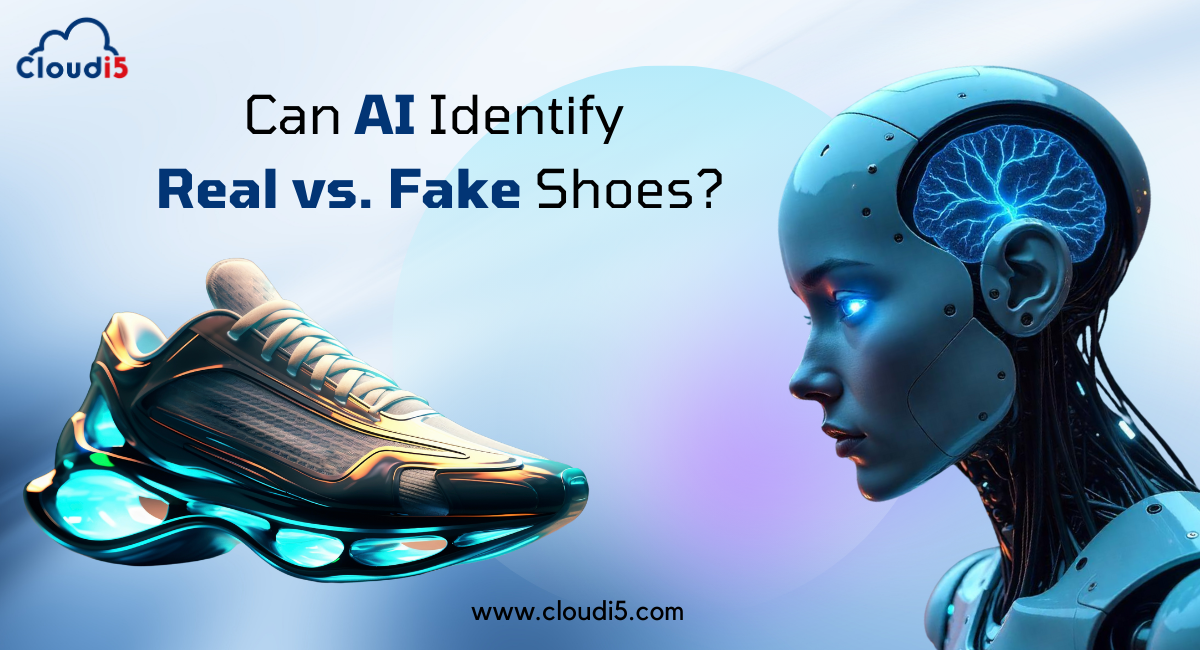
AI Can Now Tell If Your Shoes Are Real Or Fake!
So, you’ve just copped a fresh pair of Nikes from a random showroom, but now you’re wondering—are these actually the real deal or did you just get scammed? I mean, they look good, but how do you really know if they’re legit?
Here’s the thing: did you know the counterfeit shoe market is a billion-dollar industry, packed with forgeries so good they can fool even the sharpest eye? This is where AI steps in. Just like how tech evolves, AI has leveled up to the point where it can now tell if the shoes you’ve bought are actually branded or just a super convincing knockoff.
Curious how it works? Keep reading to meet your new AI friend that’s here to make sure your kicks are always on point.
The Growing Problem of Counterfeit Footwear
The counterfeit shoe market is massive, raking in billions every year. While it’s hard to get exact numbers, experts believe counterfeit shoes are being made in huge quantities. The demand for high-end brands, along with counterfeiters getting smarter, has only made the problem worse.
Spotting fake shoes used to be a job for the experts, who would look for things like stitching quality, material texture, and logo placement. But here’s the catch: counterfeiters have gotten really good at copying these details. Even experienced professionals can sometimes miss a fake.
On top of that, modern manufacturing techniques and better materials have made it harder to tell the difference. So, just relying on the old-school manual checks isn’t enough anymore to make sure you’re getting the real deal.
Osmo: The Scent Snoop
While AI’s ability to analyze images is already impressive, Osmo, an innovative startup co-founded by Alex Wiltschko, a former Google researcher, takes it a step further. Their AI doesn’t just look at pictures—it can also detect the scent of shoes! By creating a “scent map” using a large database of aromatic molecules, the AI can tell if shoes are real or fake based on their unique smells. It’s an advanced way to check authenticity!
The power of scent detection comes from the distinct smells of genuine products. Leather and suede, which are often used in high-end sneakers and bags, have specific scents that are very different from the cheaper materials typically found in counterfeit items. Osmo’s AI can pick up on these small scent differences, adding another layer of authentication on top of visual checks. This technology is especially useful for products like sneakers and leather goods, where the quality of the material is key to determining if they are authentic.
How AI Detects Counterfeit Kicks?
Scent Detection (Emerging Technology):
- Scent Profiling: AI can analyze the unique scent profiles of genuine materials like leather and suede.
- Counterfeit Detection: It compares the scent of the shoe to a database of authentic scents to identify fakes.
Image Analysis
AI works by studying thousands of real and fake shoes. This training helps it learn to spot tiny differences between the two. When AI looks at pictures of shoes, it can notice things like:
- Stitching Patterns: Real shoes usually have neat, even stitching, while fake ones might have messy or uneven stitching.
- Material Quality: AI can check the texture, color, and shine of materials to spot any inconsistencies.
- Logo Placement and Font: The logo’s placement and the font style are important signs of authenticity.
- Box and Tag Details: Even the packaging can give clues, like the font, color, and barcode.
Data-Driven Detection
AI doesn’t just stop at looks. It digs into the product's background. By looking at details like where the shoes were made, what materials were used, and the supply chain, AI can uncover possible issues. For example, if a shoe was made in a place not known for producing that brand, it could raise a red flag.
Real-Time Authentication
Picture this: you take a photo of your new shoes with your phone, and in seconds, you know if they’re real. AI-powered apps are making this happen. These apps use advanced tech to compare your shoe’s photo with a database of real products. By checking things like the logo, stitching, and materials, the app can quickly tell if your shoes are fake.
As AI keeps improving, we can expect even better ways to spot counterfeit goods. With AI’s help, consumers can make smarter choices and avoid the risks of buying fake products.
The Impact of AI on the Footwear Industry
A Win-Win for Consumers and Brands
AI-powered authentication is transforming the footwear industry for both shoppers and brands. Here’s how it benefits everyone:
For Consumers
- Peace of Mind: Shoppers can feel confident they’re buying real products, not fakes.
- Financial Protection: By avoiding counterfeit shoes, consumers save money, especially when purchasing high-end brands.
- Ethical Shopping: Buying authentic shoes supports legitimate brands and helps fight counterfeiting.
For the Industry
- Stronger Brand Reputation: Brands can protect their image and ensure only genuine products are sold.
- More Trust: AI helps build trust between brands and customers, leading to loyal shoppers.
- Innovation and Jobs: The use of AI creates new tech and job opportunities in related fields.
- Pressure on Counterfeiters: As AI gets smarter, counterfeiters will be pushed to improve their techniques, potentially reducing fake products.
By adopting AI to verify shoes, the footwear industry is stepping into a future of transparency, trust, and growth.Top of Form
Limitations and Future of AI in Authentication
Current Limitations
AI has made great progress in detecting counterfeit shoes, but it still has some challenges:
- Image Quality: AI relies on clear, high-quality images. Poor lighting or low resolution can affect its accuracy.
- Evolving Counterfeit Techniques: Counterfeiters are always improving, so AI models must keep updating to stay ahead.
- Model-Specific Challenges: Some shoes with complex designs or limited data can be harder for AI to analyze.
The Future of AI in Counterfeit Detection
The future looks bright for AI in spotting fake products, with some exciting advancements ahead:
- Blockchain Integration: Blockchain can help create a secure record of a product’s authenticity, adding an extra layer of trust.
- Expanding Beyond Footwear: AI can also be used to verify other luxury goods like bags, watches, and jewelry.
- Real-Time Authentication: Soon, we’ll be able to use our smartphones to instantly check if products are real.
- Collaborative Efforts: Working with experts, law enforcement, and tech companies will make AI even better at fighting counterfeiting.
As AI improves, we can expect a future where counterfeit goods are much less of a problem.
Conclusion
So, there you have it, folks! AI is the new fashion police, sniffing out fake kicks with incredible accuracy. No more worrying about getting duped by a pair of counterfeit kicks. With AI on your side, you can strut your stuff with confidence, knowing your shoes are the real deal.
AI checking your kicks—cool or nah?
Trusted By












Leave Comments